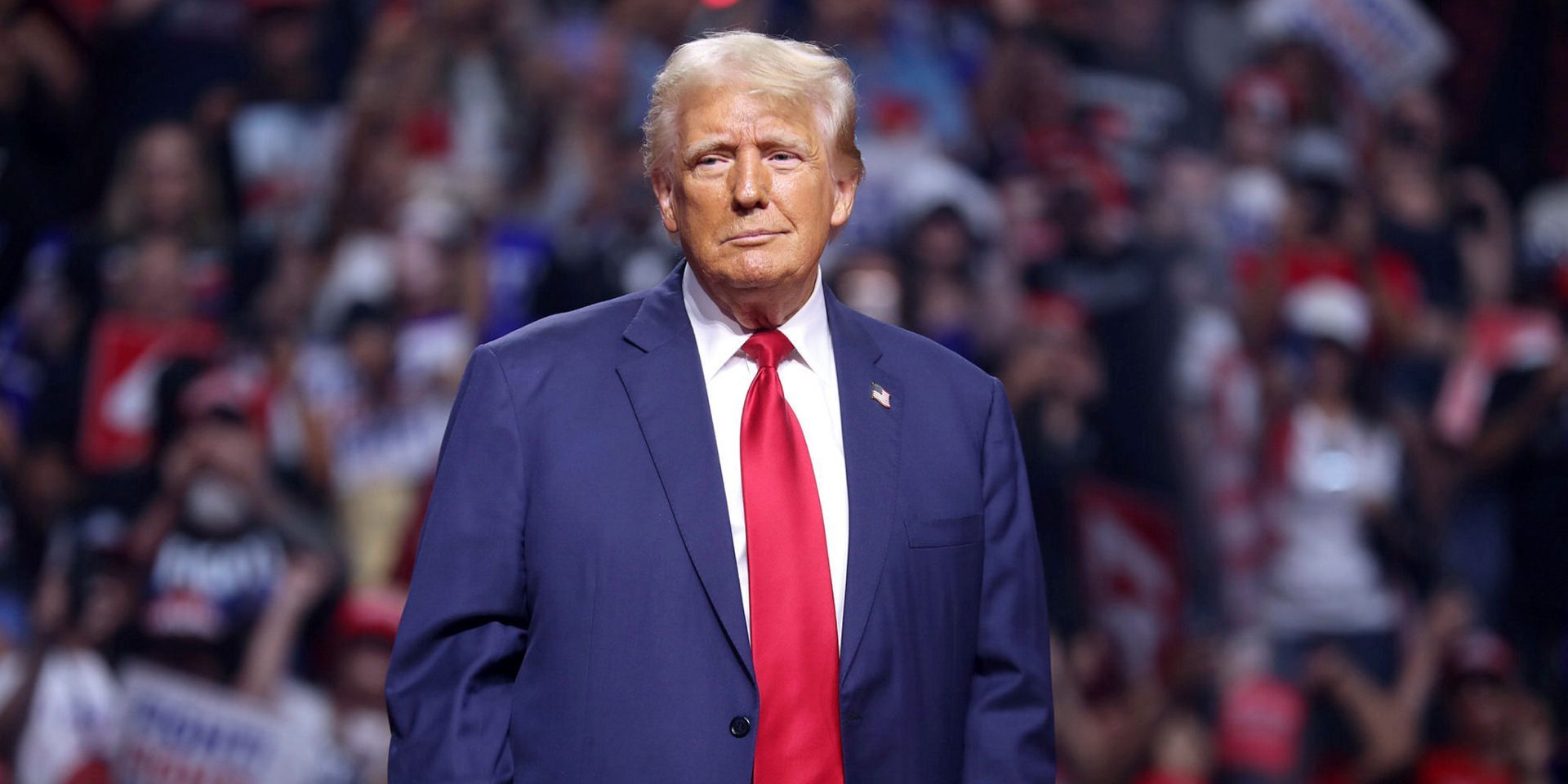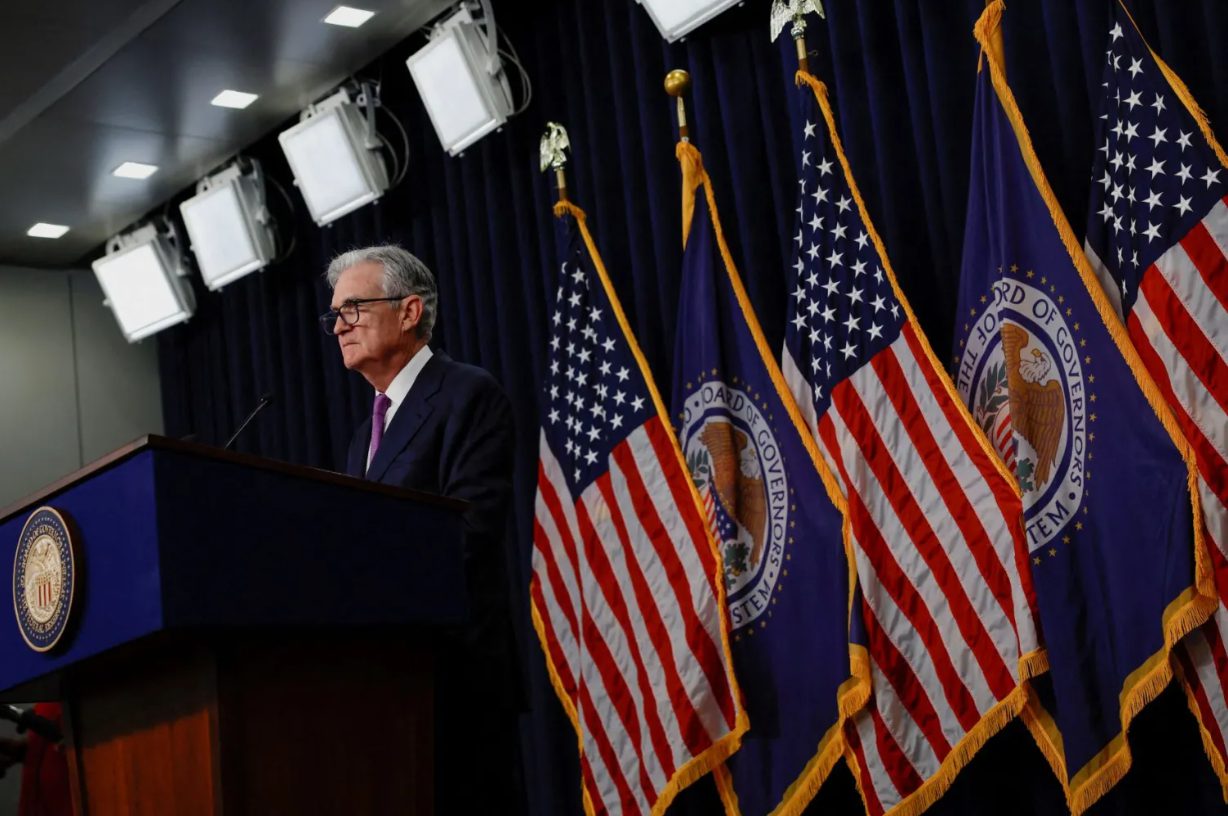Triple Threat to U.S. Markets: Stocks, Bonds, and U.S. Dollar Dive

The U.S. markets crisis has intensified this week as stocks, bonds, and the U.S. dollar are all simultaneously plunging. This triple threat traces directly to policy choices made by the Trump administration, creating some unprecedented challenges for investors right now.
Also Read: De-Dollarization: Experts Predict Outcome Of Yuan Vs. US Dollar
How Trump’s Policies, Fed Tensions, and Debt Push Risk Higher

Treasury Yields Climb Amid U.S. Markets Crisis
The bond yield surge has reached pretty alarming levels on April 21, with 20-year bonds exceeding 4.9% at the time of writing. This bond yield surge reflects growing concerns about Trump’s proposed $4.5 trillion tax cuts and also the already historic $1.3 trillion budget deficit that’s been accumulating. The U.S. markets crisis has investors piling into short-term debt while selling off long-term Treasuries.
Trump Tax Cuts Fuel Deficit Worries
Trump’s tax cuts proposal from 2025 has Republican lawmakers already drafting legislation despite some serious questions about funding. With national debt standing at a staggering $36.6 trillion right now, Trump’s tax cuts plan could simply worsen the U.S. markets crisis if international investors start to demand higher risk premiums.
Also Read: Trump Crashes the Stock Market After Public Attack On Powell’s Policies
Dollar Selloff Accelerates
A significant dollar selloff has emerged in recent days as capital moves to non-U.S. assets. Early indicators are also showing South Korean exports to the U.S. dropped about 14% in the first 20 days compared to last year. The dollar selloff has intensified after tariffs raised fears about America’s global standing.
Powell After Trump’s Public Attack
Powell‘s interest rate decisions are facing direct criticism from President Trump amid the ongoing U.S. market crisis.
President Trump has discussed possibly firing Powell before his 2026 term ends, though Treasury Secretary Scott Bessent has reportedly opposed this move. The president has referred to Powell as “Mr. Too Late” for not lowering interest rates.
During Powell’s leadership, the Federal Reserve strengthened its inflation fight, thus extending the timeframe before rate reductions until expectations fall below the target. The modern economic situation developed because of rising bond yields, together with intense scrutiny of Powell’s interest rate strategy and Trump’s future tax cut plan for 2025. American markets continue to decline as dollar values persist in dropping during each subsequent daily period.
Also Read: Cryptocurrency Market Sheds $760 Billion After Trump Entered White House
Market Outlook Uncertain
The world lacks an alternative system to match the status of U.S. capital markets. The S&P 500 declined approximately 2.8% throughout most of April 21 as market participants worried about governmental fiscal choices and trade agreement progress.
The attempt by Trump to adjust monetary policy joins the Budget deficit risks, pointing in an adverse direction, which makes the situation very uncertain.
Markets during the U.S. crisis experience broader definable problems that stem from increasing interest rate yields, followed by dollar market declines, and governmental monetary policy evaluation becomes a key factor determining future market direction.
Read More

China Gains Ground as Trump Turns 15 Allies Against U.S. Trade Deals
Triple Threat to U.S. Markets: Stocks, Bonds, and U.S. Dollar Dive

The U.S. markets crisis has intensified this week as stocks, bonds, and the U.S. dollar are all simultaneously plunging. This triple threat traces directly to policy choices made by the Trump administration, creating some unprecedented challenges for investors right now.
Also Read: De-Dollarization: Experts Predict Outcome Of Yuan Vs. US Dollar
How Trump’s Policies, Fed Tensions, and Debt Push Risk Higher

Treasury Yields Climb Amid U.S. Markets Crisis
The bond yield surge has reached pretty alarming levels on April 21, with 20-year bonds exceeding 4.9% at the time of writing. This bond yield surge reflects growing concerns about Trump’s proposed $4.5 trillion tax cuts and also the already historic $1.3 trillion budget deficit that’s been accumulating. The U.S. markets crisis has investors piling into short-term debt while selling off long-term Treasuries.
Trump Tax Cuts Fuel Deficit Worries
Trump’s tax cuts proposal from 2025 has Republican lawmakers already drafting legislation despite some serious questions about funding. With national debt standing at a staggering $36.6 trillion right now, Trump’s tax cuts plan could simply worsen the U.S. markets crisis if international investors start to demand higher risk premiums.
Also Read: Trump Crashes the Stock Market After Public Attack On Powell’s Policies
Dollar Selloff Accelerates
A significant dollar selloff has emerged in recent days as capital moves to non-U.S. assets. Early indicators are also showing South Korean exports to the U.S. dropped about 14% in the first 20 days compared to last year. The dollar selloff has intensified after tariffs raised fears about America’s global standing.
Powell After Trump’s Public Attack
Powell‘s interest rate decisions are facing direct criticism from President Trump amid the ongoing U.S. market crisis.
President Trump has discussed possibly firing Powell before his 2026 term ends, though Treasury Secretary Scott Bessent has reportedly opposed this move. The president has referred to Powell as “Mr. Too Late” for not lowering interest rates.
During Powell’s leadership, the Federal Reserve strengthened its inflation fight, thus extending the timeframe before rate reductions until expectations fall below the target. The modern economic situation developed because of rising bond yields, together with intense scrutiny of Powell’s interest rate strategy and Trump’s future tax cut plan for 2025. American markets continue to decline as dollar values persist in dropping during each subsequent daily period.
Also Read: Cryptocurrency Market Sheds $760 Billion After Trump Entered White House
Market Outlook Uncertain
The world lacks an alternative system to match the status of U.S. capital markets. The S&P 500 declined approximately 2.8% throughout most of April 21 as market participants worried about governmental fiscal choices and trade agreement progress.
The attempt by Trump to adjust monetary policy joins the Budget deficit risks, pointing in an adverse direction, which makes the situation very uncertain.
Markets during the U.S. crisis experience broader definable problems that stem from increasing interest rate yields, followed by dollar market declines, and governmental monetary policy evaluation becomes a key factor determining future market direction.
Read More

